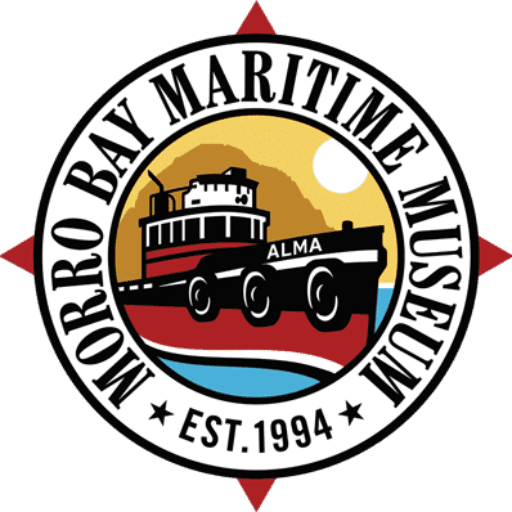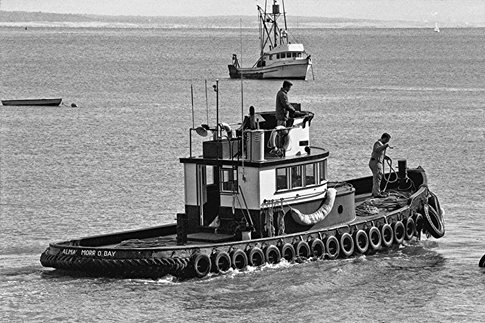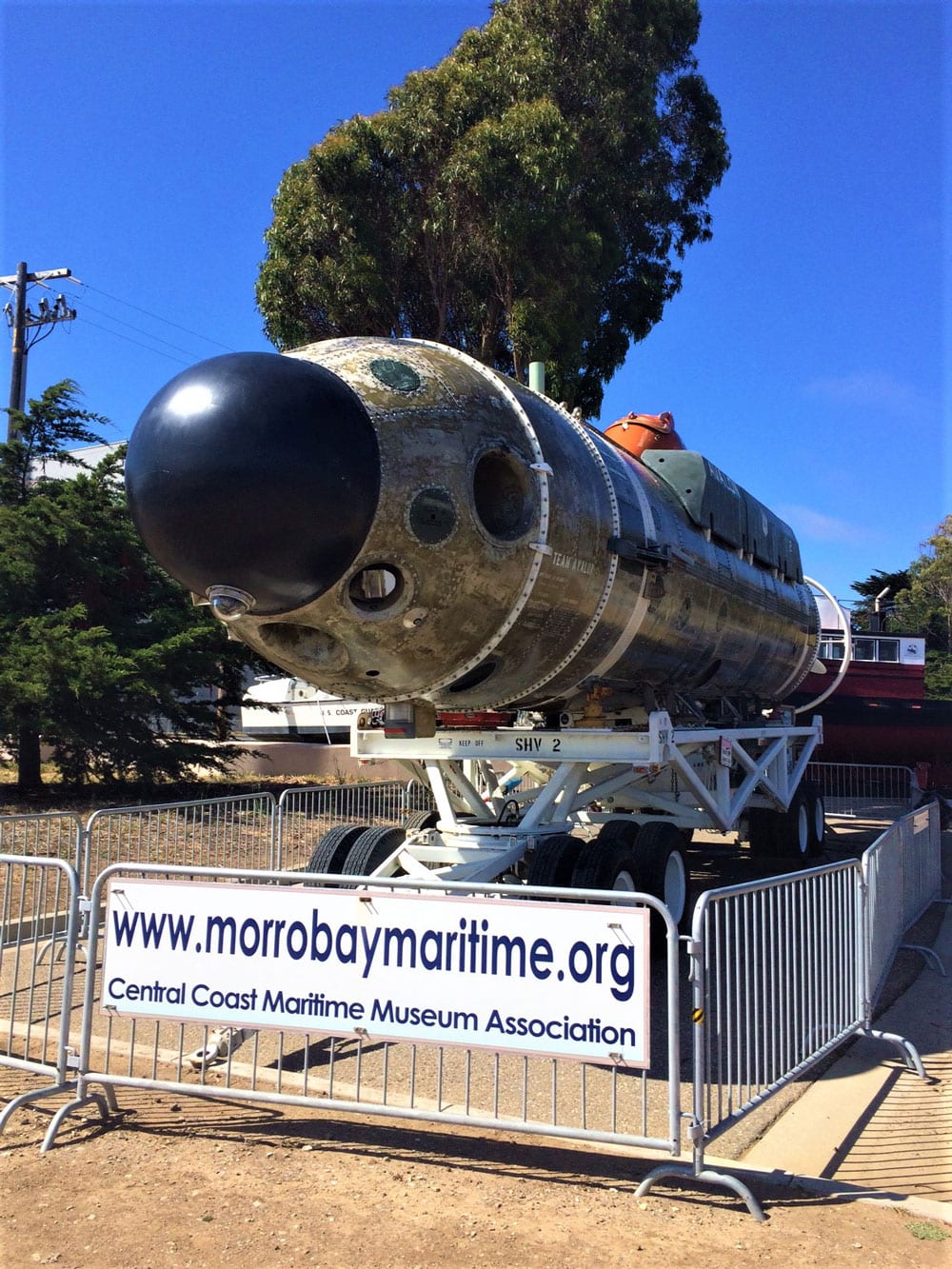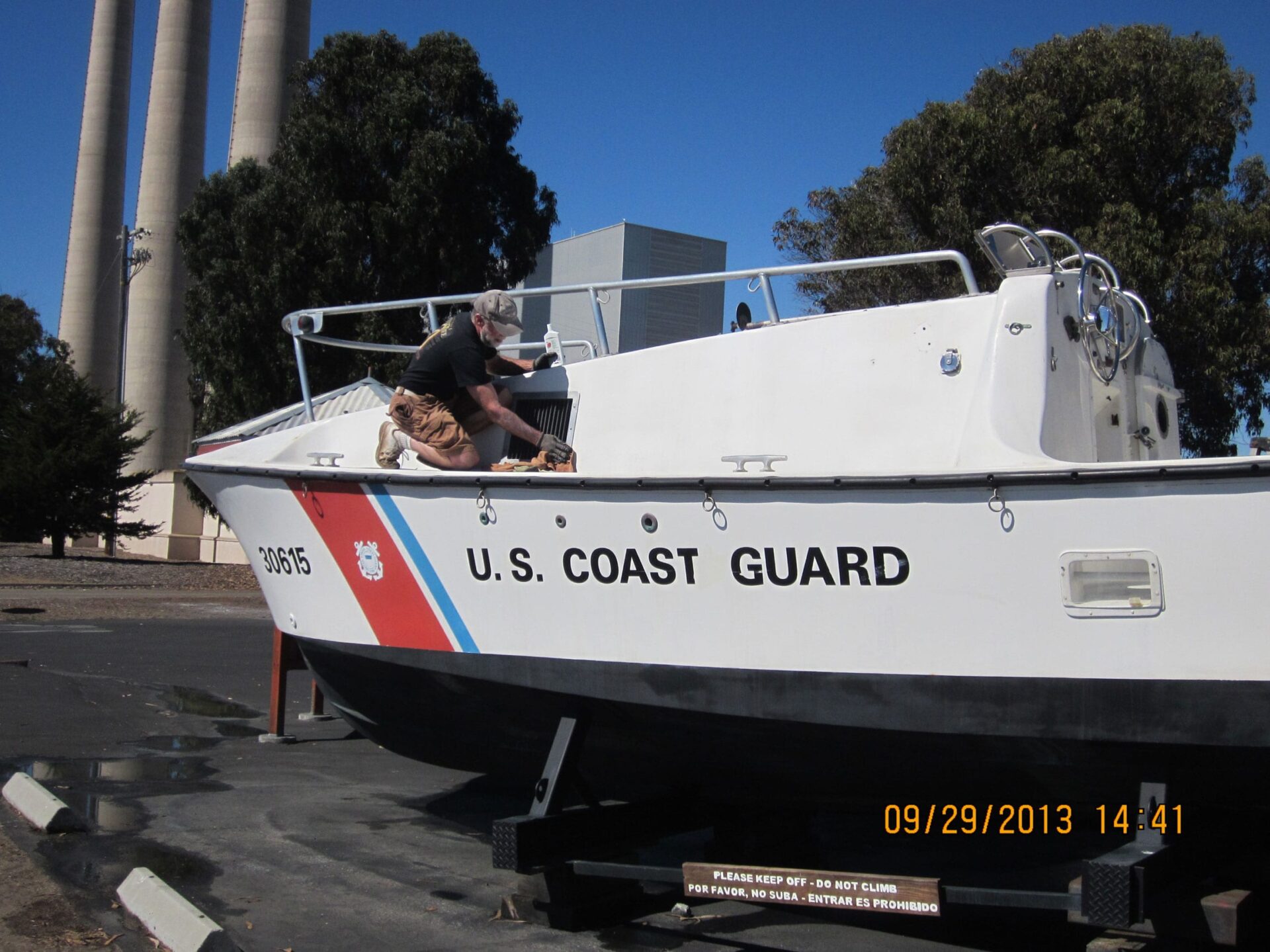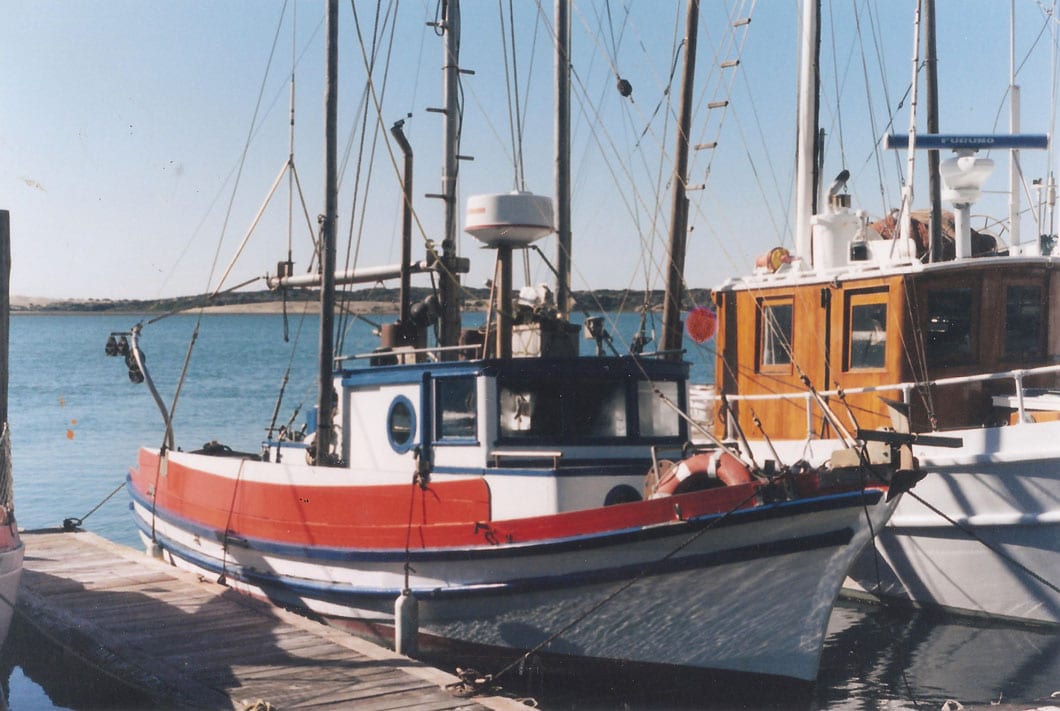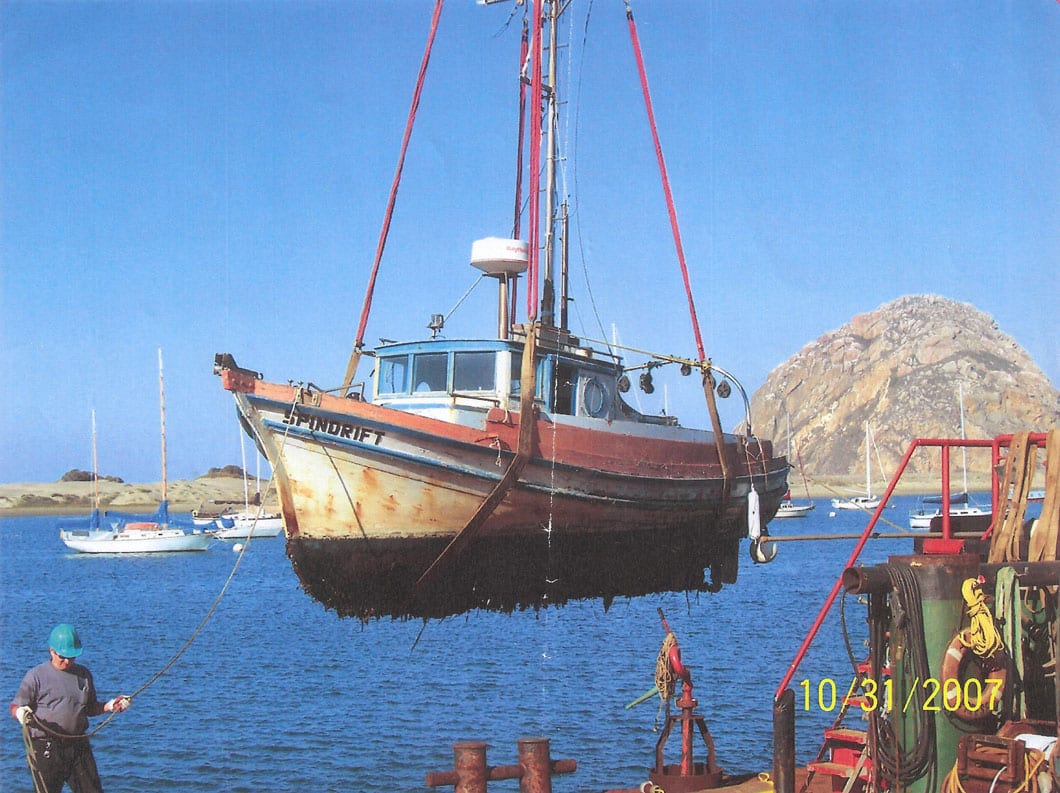Tug Boat “Alma”
The Alma’s significant action in history came on the morning of December 23, 1941 when she dashed out from her mooring at the Cayucos Pier to search for survivors of the Union Oil tanker Montebello. The 440’ ship had been attacked and sunk by a Japanese submarine approximately six miles offshore, north of Cambria, California where she lies today on the bottom in 880′ of water. The Alma picked up two of the tanker’s lifeboats and carried them to safety at the Cayucos Pier. Another lifeboat was picked up by a companion tug and the fourth, containing the ship’s captain, went ashore near Cambria.
1927
Year Built
48
Length (ft.)
13
Beam (ft.)
5.2
Draft (ft.)
DSRV Avalon
The concept of the DSRV was the result of work done within the US Navy’s Special Projects Office and directed by its chief scientist, Dr. John Craven. The build contract for both DSRV’s (Avalon and Mystic) was awarded to the Sunnyvale California office of the Lockheed Space and Missile Company in August of 1966. The DSRV Mystic was launched in 1970 and the Avalon in the summer of 1971.
The Morro Bay Maritime Museum is proud to be the custodian of such an important and rare piece of US Naval History and maritime technology. If you would like to know about this unique vehicle we invite you to stop by and see her up close.
Courtesy of the Naval History and Heritage Command
1971
Year Built
49
Length (ft.)
24
Passengers
4
Speed (knots)
USCG Surf Rescue Boat
(CG-30615)
- Length – 30’6″
- Beam – 9’4″
- Draft – 3’7″
- Displacement – 11,000 lbs
- Range – 130 Nautical Miles
1983
Year Built
375
Horsepower
7
Passengers
31
Speed (knots)
Spindrift
1933
Year Built
28
Length (ft.)
9
Beam (ft.)
3
Draft
